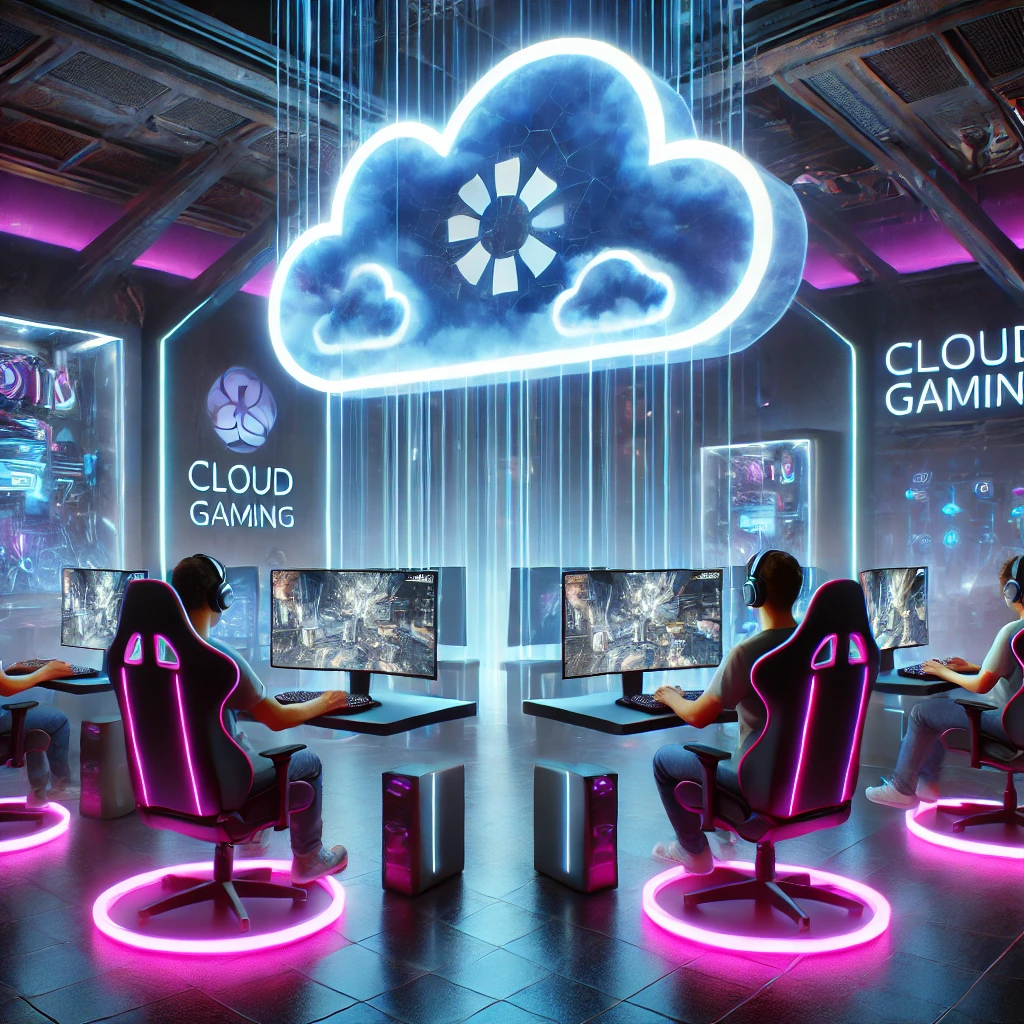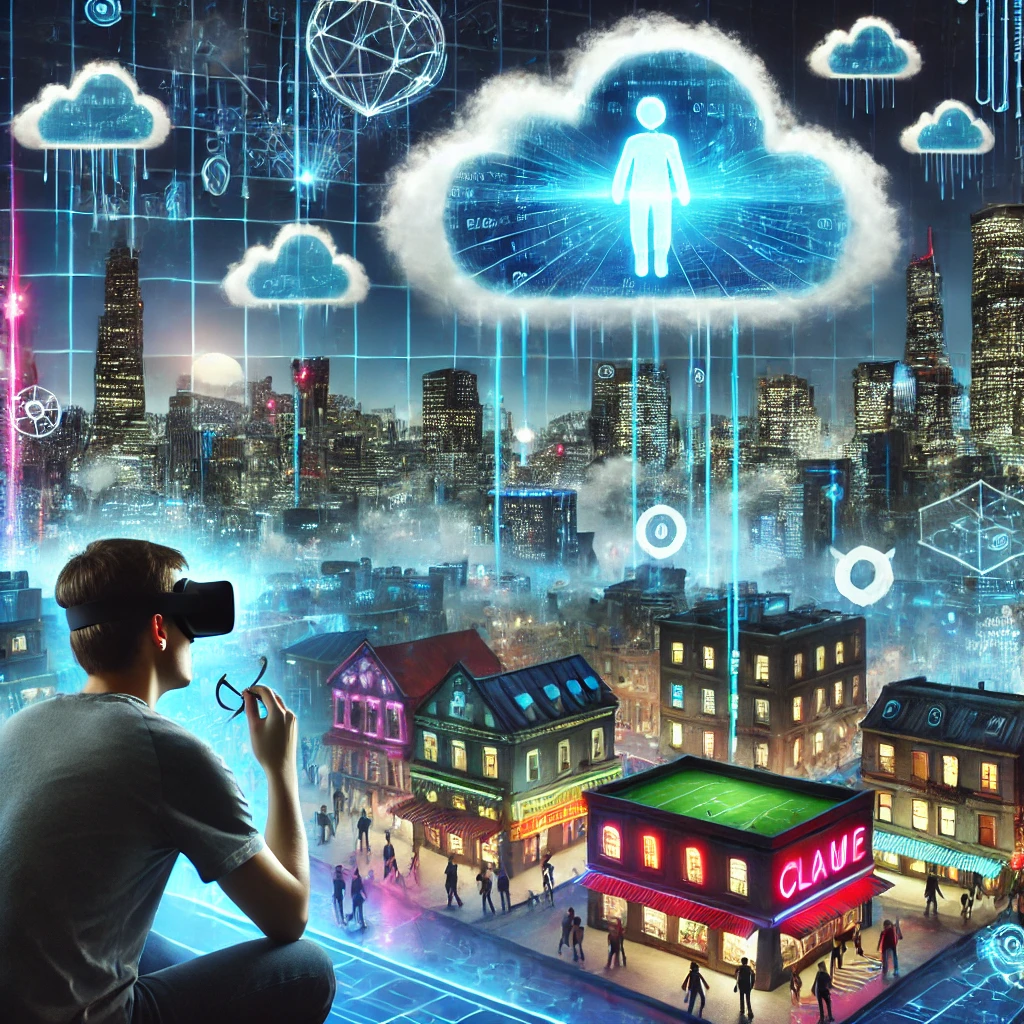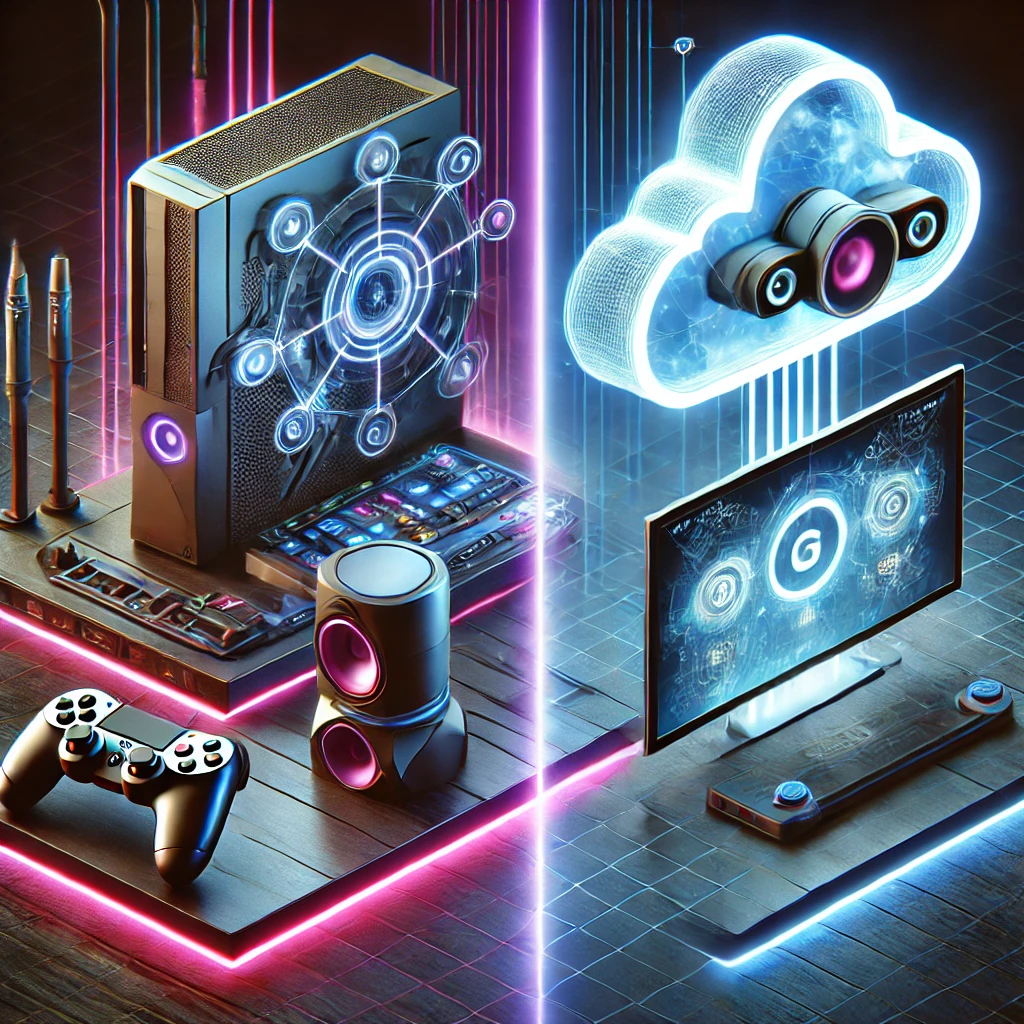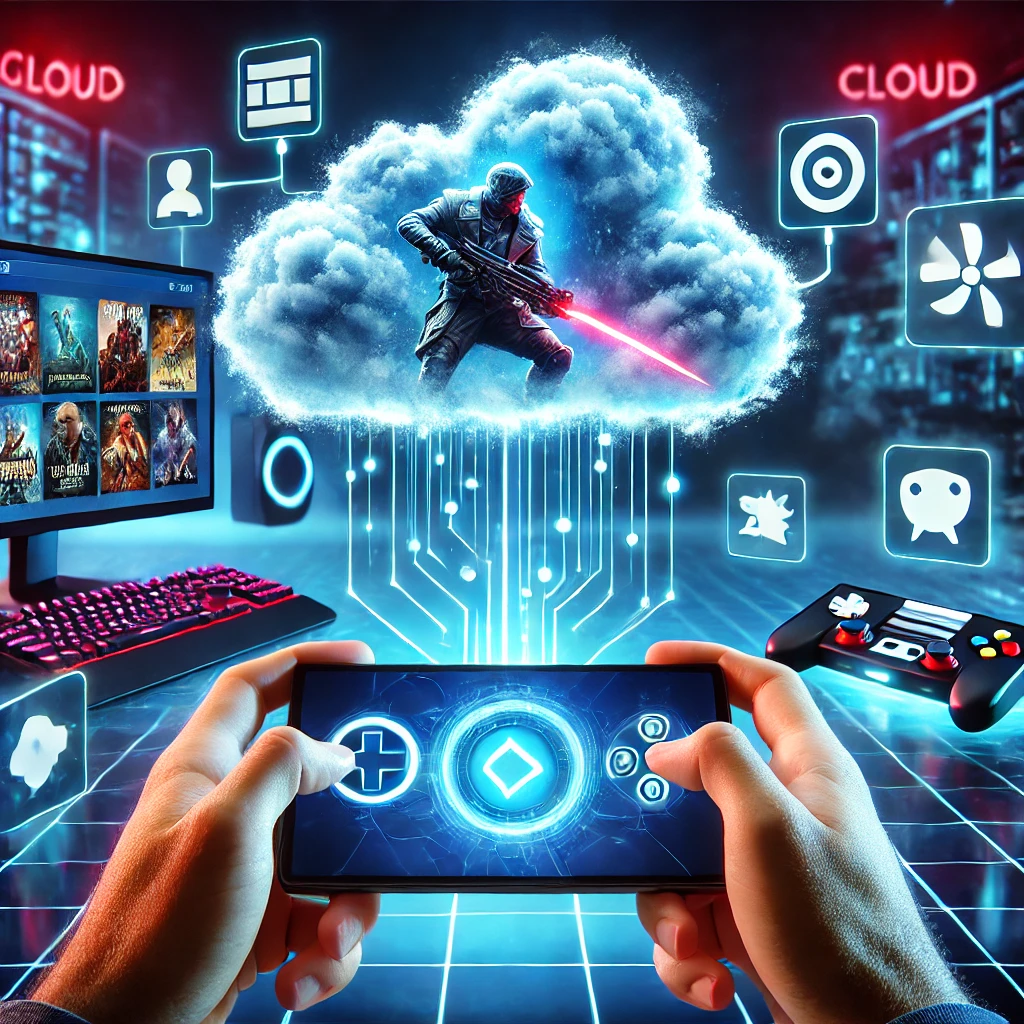First Things First
The gaming industry has undergone significant transformations over the years, from arcade machines to home consoles, and now, to. Cloud gaming is an emerging technology that allows gamers to play high-quality titles without requiring expensive hardware. With companies like Google Stadia, Microsoft Xbox Cloud Gaming, and NVIDIA GeForce Now investing heavily in cloud gaming platforms, a pressing question arises: Is this the beginning of the end for traditional gaming consoles?
What is Cloud Gaming?
Cloud gaming, also known as game streaming, is a technology that enables players to stream video games over the internet rather than downloading or installing them on their devices. Unlike traditional gaming that relies on powerful hardware like PlayStation, Xbox, or high-end PCs, cloud gaming operates on remote servers, and players only need a stable internet connection to access games.

Popular Cloud Gaming Services
How Does Cloud Gaming Work?
Cloud gaming platforms function similarly to video streaming services like Netflix or YouTube. The game runs on powerful remote servers, and its audio and video output are streamed to the player’s device. Inputs from the player’s controller or keyboard are sent back to the server in real-time. This eliminates the need for high-end gaming hardware but demands a fast and stable internet connection to ensure smooth gameplay.

Advantages of Cloud Gaming
1. No Need for Expensive Hardware
One of the biggest advantages of Cloud-based gaming is that players no longer need expensive gaming consoles or PCs. Since games run on cloud servers, users can play even on low-spec devices such as smartphones, tablets, or smart TVs.
2. Play Anywhere, Anytime
With, players can access their favorite games from any device, anywhere in the world, as long as they have a reliable internet connection. This flexibility makes gaming more accessible and convenient.
3. Instant Play with No Downloads
Traditional gaming often requires downloading large game files, which can take hours. Cloud gaming eliminates this step, allowing instant access to games without waiting for downloads or updates.
4. Cross-Device Compatibility
Most cloud gaming platforms support multiple devices, including smartphones, tablets, smart TVs, and even older PCs. This allows seamless gameplay across different devices without needing multiple game copies.
5. Automatic Updates and Maintenance
With, game updates, patches, and system maintenance are handled on the server-side. This means players no longer have to worry about installing updates or managing system storage.
Challenges and Limitations

1. Dependence on Internet Speed
Cloud gaming heavily relies on a stable and high-speed internet connection. Latency issues and buffering can lead to lag, making fast-paced games like first-person shooters (FPS) or fighting games frustrating to play.
2. Subscription Costs
Many Streaming games platforms operate on a subscription-based model, which can be costly in the long run. Unlike buying a console where you make a one-time investment, often requires monthly fees, making it less appealing for some gamers.
3. Limited Game Library
Not all games are available on cloud gaming platforms. Some popular titles are restricted due to licensing issues, and newer releases might take time to be added to cloud libraries.
4. Ownership Issues
With traditional gaming, players own physical or digital copies of their games. In however, users don’t own the games but merely access them as long as they subscribe to the service. If a game is removed from the platform, players lose access to it.
5. Input Lag and Latency
Since Remote gaming depends on internet connectivity, even a small delay in input response can impact gameplay. This is especially problematic for competitive gaming where split-second reactions matter.
Will Remote gaming Replace Consoles?
While cloud gaming offers numerous benefits, it is unlikely to completely replace traditional consoles in the near future. Here’s why:
- Hardcore Gamers Still Prefer Consoles and PCs: Many serious gamers prefer the performance, reliability, and tactile experience of gaming on dedicated hardware.
- Exclusive Games and Brand Loyalty: PlayStation, Xbox, and Nintendo have strong exclusive game libraries that attract loyal fans.
- Internet Infrastructure Limitations: Not everyone has access to high-speed internet, which is a major requirement for Remote gaming.
- Physical Media and Collector Culture: Some gamers still prefer owning physical copies of their games and consoles as collectibles.
The Future of Gaming: A Hybrid Model?

Instead of cloud gaming completely replacing consoles, the industry might move towards a hybrid model. In this model, Internet-powered gaming will complement traditional gaming rather than replacing it entirely. Console manufacturers like Microsoft and Sony are already integrating Remote gaming into their ecosystems. For instance, Xbox Cloud Gaming allows players to stream games on different devices, while PlayStation Now provides cloud-based access to older titles.
ALSO READ- Motorola Razr 50 Ultra: The Future of Foldable Smartphones with AI Intelligence
Conclusion
Game streaming is undoubtedly a revolutionary step in the Online gaming services industry, offering accessibility, convenience, and affordability. However, it comes with its challenges, including dependency on internet speed, input lag, and ownership concerns. While Next-gen gaming experience is growing rapidly, traditional gaming consoles are unlikely to disappear anytime soon. Instead, the future of gaming may lie in a hybrid approach, where Streaming games and console Remote gaming coexist to offer the best of both worlds. Whether you’re a casual gamer or a hardcore enthusiast, the future of gaming is bound to be exciting and full of innovations!
